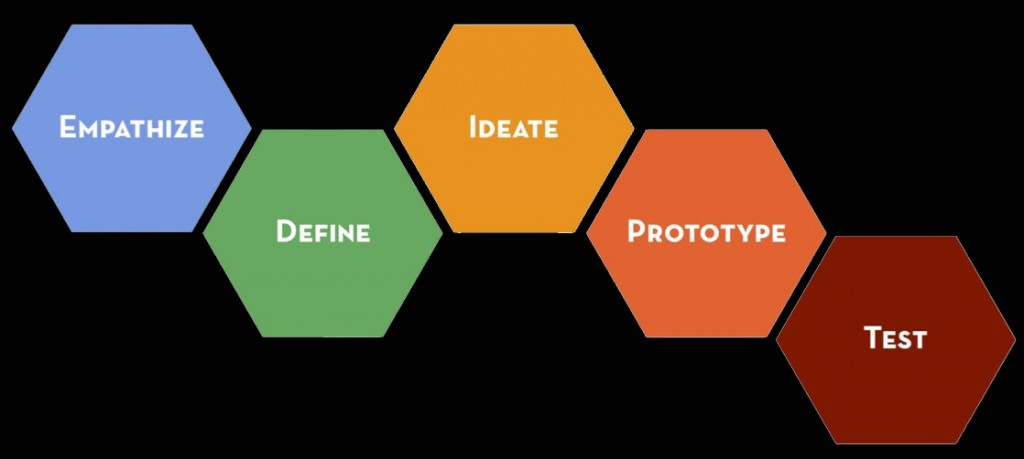A Design Thinking Process
In this class we will normally apply the following, which is one version of a design thinking process. This Design Thinking process first defines the problem and then implements the solutions, always with the needs of the user demographic at the core of concept development. This process focuses on needfinding, understanding, creating, thinking, and doing. At the core of this process is a bias towards action and creation: by creating and testing something, you can continue to learn and improve upon your initial ideas.
This design thinking process consists of these 5 steps:

EMPATHIZE: Work to fully understand the experience of the user for whom you are designing. Do this through observation, interaction, and immersing yourself in their experiences.
DEFINE: Process and synthesize the findings from your empathy work in order to form a user point of view that you will address with your design.
IDEATE: Explore a wide variety of possible solutions through generating a large quantity of diverse possible solutions, allowing you to step beyond the obvious and explore a range of ideas.
PROTOTYPE: Transform your ideas into a physical form so that you can experience and interact with them and, in the process, learn and develop more empathy.
TEST: Try out high-resolution products and use observations and feedback to refine prototypes, learn more about the user, and refine your original point of view.
For more information on this process check out the the d.school way of working.